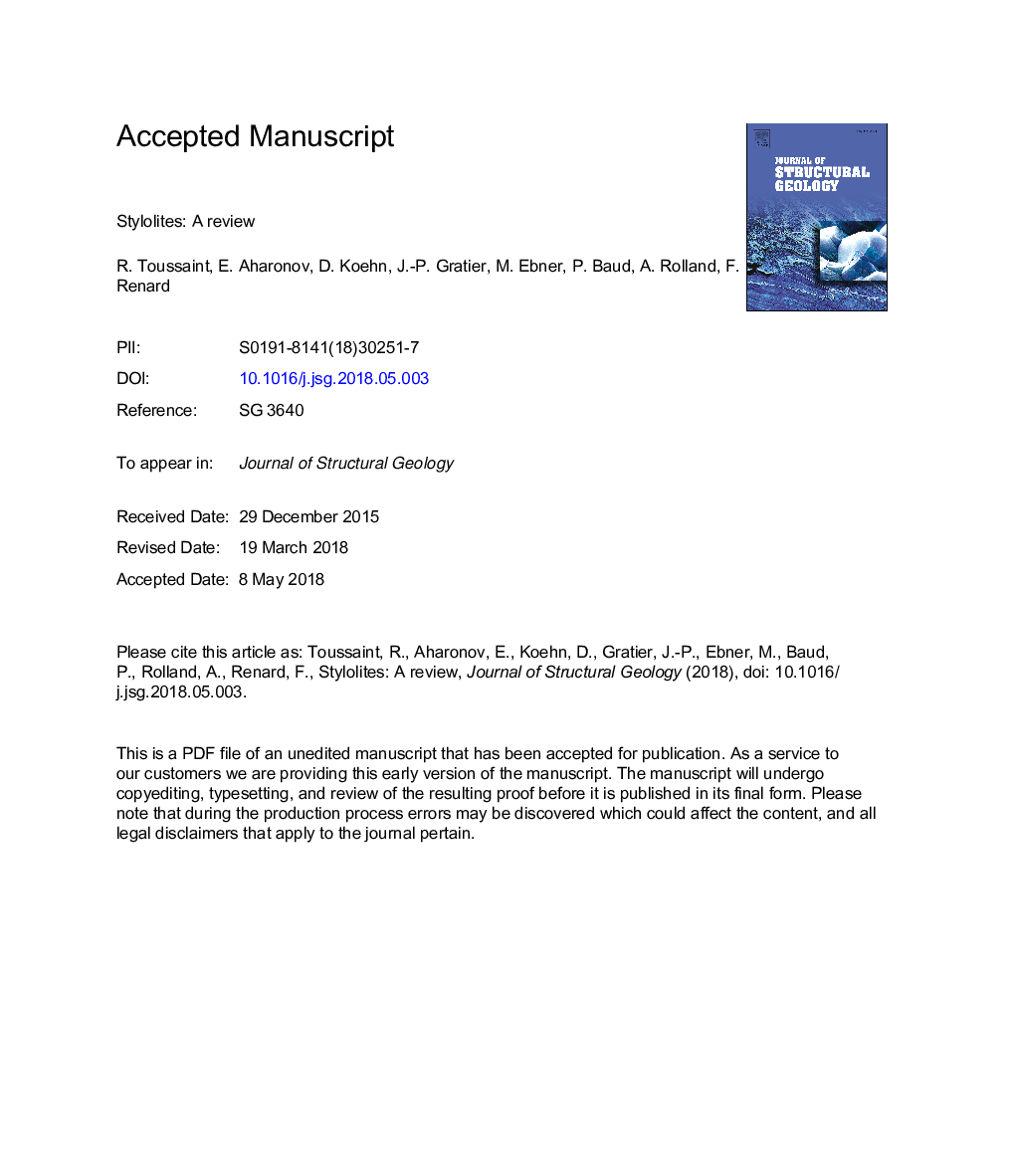| Article ID | Journal | Published Year | Pages | File Type |
|---|---|---|---|---|
| 8914375 | Journal of Structural Geology | 2018 | 107 Pages |
Abstract
Geometrically, stylolites have fractal roughness, with fractal geometrical properties exhibiting typically three scaling regimes: a self-affine scaling with Hurst exponent 1.1â¯Â±â¯0.1â¯at small scale (up to tens or hundreds of microns), another one with Hurst exponent around 0.5 to 0.6â¯at intermediate scale (up to millimeters or centimeters), and in the case of sedimentary stylolites, a flat scaling at large scale. More complicated anisotropic scaling (scaling laws depending of the direction of the profile considered) is found in the case of tectonic stylolites. We report models based on first principles from physical chemistry and statistical physics, including a mechanical component for the free-energy associated with stress concentrations, and a precise tracking of the influence of grain-scale heterogeneities and disorder on the resulting (micro)structures. Experimental efforts to reproduce stylolites in the laboratory are also reviewed. We show that although micrometer-size stylolite teeth are obtained in laboratory experiments, teeth deforming numerous grains have not yet been obtained experimentally, which is understandable given the very long formation time of such geometries. Finally, the applications of stylolites as strain and stress markers, to determine paleostress magnitude are reviewed. We show that the scalings in stylolite heights and the crossover scale between these scalings can be used to determine the stress magnitude (its scalar value) perpendicular to the stylolite surface during the stylolite formation, and that the stress anisotropy in the stylolite plane can be determined for the case of tectonic stylolites. We also show that the crossover between medium (millimetric) scales and large (pluricentimetric) scales, in the case of sedimentary stylolites, provides a good marker for the total amount of dissolution, which is still valid even when the largest teeth start to dissolve - which leads to the loss of information, since the total deformation is not anymore recorded in a single marker structure. We discuss the impact of the stylolites on the evolution of the transport properties of the hosting rock, and show that they promote a permeability increase parallel to the stylolites, whereas their effect on the permeability transverse to the stylolite can be negligible, or may reduce the permeability, depending on the development of the stylolite.
Related Topics
Physical Sciences and Engineering
Earth and Planetary Sciences
Geology
Authors
R. Toussaint, E. Aharonov, D. Koehn, J.-P. Gratier, M. Ebner, P. Baud, A. Rolland, F. Renard,
